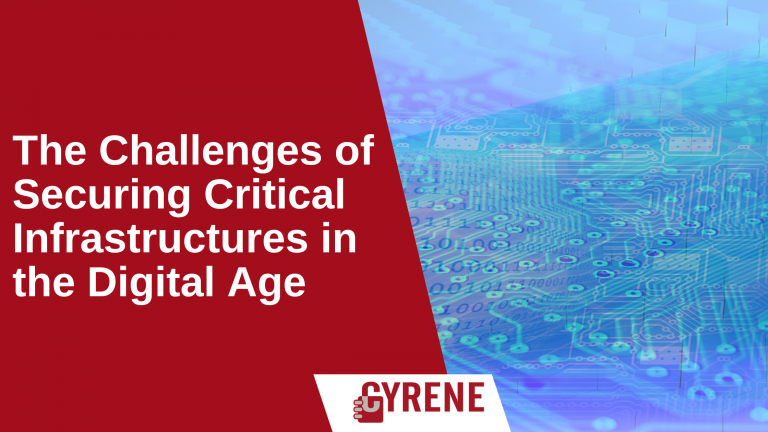In the new digital era, our critical infrastructures (CIs) are increasingly interconnected and rely heavily on cyber systems to operate efficiently. Unfortunately, security officers and operators responsible for protecting these CIs face significant challenges in their efforts to maintain security and protect against cyber threats.
One of the primary challenges faced by security officers and operators is the lack of an easy and integrated way to protect their interconnected CIs and cyber systems. Unlike traditional security measures, which may have been able to focus on securing a single physical location or system, the interconnected nature of modern CIs requires a more holistic approach.
The problem is that these CIs often consist of a complex network of systems and devices, including industrial control systems, supervisory control, and data acquisition (SCADA) systems, and other operational technology (OT) systems. Each of these systems may have different security requirements and vulnerabilities, making it difficult for security officers and operators to ensure comprehensive protection.
Additionally, many CIs were designed and implemented before the current era of cybersecurity threats. As a result, these systems may have inherent vulnerabilities that make them susceptible to attack. Furthermore, many CIs are also operated by multiple stakeholders with varying levels of security expertise and resources, making it challenging to implement consistent security measures across the entire infrastructure.
To compound these challenges, many CIs are also subject to regulatory requirements that can make it difficult to implement new security measures or make changes to existing systems. For example, utilities and other critical infrastructure providers may be subject to regulations that mandate certain security measures, but these regulations may not account for the fast-evolving nature of cyber threats.
Finally, the increasing use of cloud-based services and the Internet of Things (IoT) in critical infrastructure further complicates security efforts. These technologies can introduce new vulnerabilities and risks that may not be fully understood by security officers and operators.
In conclusion, security officers and operators responsible for protecting critical infrastructures and cyber systems in the new digital era face significant challenges due to the lack of an easy and integrated way to protect these interconnected systems. The complexity of these systems, their inherent vulnerabilities, multiple stakeholders, and regulatory requirements make it difficult to implement comprehensive security measures. As the threat landscape continues to evolve, it is essential to find new solutions that can keep pace with these changes and ensure the continued security of our critical infrastructures.
References
1. “Securing Critical Infrastructure: The Foundation of Our Nation’s Resilience,” National Institute of Standards and Technology (NIST), https://www.nist.gov/system/files/documents/2016/09/22/10_1_16_ciip_white_paper_final_0.pdf
2. “Cybersecurity and Critical Infrastructure: Protecting America’s Future,” U.S. Department of Homeland Security, https://www.dhs.gov/sites/default/files/publications/CSD-Cybersecurity-and-Critical-Infrastructure-Protecting-Americas-Future-508.pdf
3. “Critical Infrastructure Cybersecurity: Challenges and Solutions,” Harvard Kennedy School Belfer Center for Science and International Affairs, https://www.belfercenter.org/sites/default/files/files/publication/Cyber%20FINAL.pdf
4. “Protecting Critical Infrastructure from Cyber Threats,” McAfee, https://www.mcafee.com/enterprise/en-us/assets/reports/restricted/protecting-critical-infrastructure-cyber-threats.pdf
KEY FACTS
Project Coordinator: Sofoklis Efremidis
Institution: Maggioli SPA
Email: info{at}cyrene.eu
Start: 1-10-2020
Duration: 36 months
Participating organisations: 14
Number of countries: 10
FUNDING
 This project has received funding from the European Union’s Horizon 2020 Research and Innovation program under grant agreement No 952690. The website reflects only the view of the author(s) and the Commission is not responsible for any use that may be made of the information it contains.
This project has received funding from the European Union’s Horizon 2020 Research and Innovation program under grant agreement No 952690. The website reflects only the view of the author(s) and the Commission is not responsible for any use that may be made of the information it contains.


